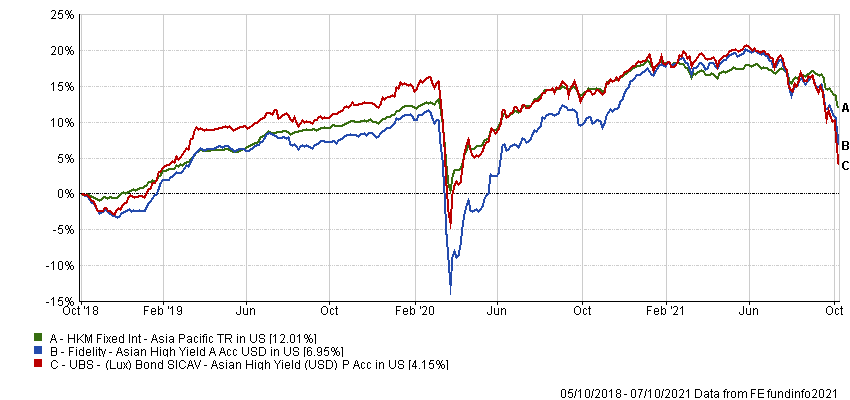The FSA Spy market buzz – 4 April 2025
BNY Mellon IM’s conversion; Elusive libertarian investing dream; Eastspring and Vontobel on tariffs; Wisdom of Larry Fink; Has the EU finally seen sense? Price of admission and much more.

The Fidelity fund has generated a three-year cumulative return of 6.95%, according to FE Fundinfo, compared with 12.01% for the average Asia Pacific product available to Hong Kong retail investors. The UBS fund has posted a 4.15% three-year cumulative return.
The volatilities of the Fidelity and UBS funds during the same period were 10.14% and 9.65%, respectively, FE Fundinfo data shows.
Looking at the Fidelity fund, Ge pointed out that the strategy’s long track record dating back to 2007 is less relevant considering previous manager Bryan Collins’ departure and the introduction of two new decision-makers in July 2020.
“However, since Tae Ho Ryu and Terrence Pang took the helm, the strategy’s clean share class outperformed its category benchmark JPM ACI Non-Investment Grade Index by 390 basis points and outpaced 84% of category rivals.”
The portfolio lost 15.25% during 2020’s first-quarter market sell-off, hurt by its overweight in higher-yielding debt as credit spreads widened significantly in March.
“But, the team’s decision to add risk in the ensuing months, which was fuelled by attractive valuations and their optimism around vaccine news, proved to be additive as the market rallied strongly.”
At the UBS fun, manager “Ross Dilkes has delivered solid absolute and peer-relative returns,” said Ge.
Thanks to the team’s risk[1]conscious approach, which looks to equilibrate credit risk with duration and foreign exchange calls, return volatility (as measured by standard deviation), down-market capture, and drawdowns have consistently clocked in lower against the peer median over the trailing one-, three-, and five-year periods, according to Ge
Sector allocation and security section has added value, partially offset by the team’s duration and yield-curve management calls. Nevertheless, the portfolio did better than 77% of peers during the pandemic-induced March sell-off.
The Fidelity fund’s managers raised cash levels this year in response to outflows of $263m in the six months to the end of September, prompted by investors’ concerns about the China property sector. In contrast, the UBS fund has enjoyed inflows, noted Ge, as global investors continue to seek income.
Discrete calendar year performance
| Fund/ Sector |
YTD* |
2020 |
2019 |
2018 |
2017 |
2016 |
| Fidelity |
-8.63% |
6.99% |
11.95% |
-4.67% |
6.95% |
13.56% |
| UBS |
-12.15% |
4.25% |
14.09% |
-3.26% |
5.73% |
10.64% |
| Fixed Interest – Apac |
-5.22% |
6.53% |
10.05% |
-3.07% |
6.74% |
3.32% |
 From “FAANG” to “MAMAA” to “Magnificent 7” – what’s in a name?
From “FAANG” to “MAMAA” to “Magnificent 7” – what’s in a name?
 Thematic investment series: Innovative transformation cuts across “old” and “new” economy companies
Thematic investment series: Innovative transformation cuts across “old” and “new” economy companies
 Your Questions Answered by Federated Hermes Impact Opportunities
Your Questions Answered by Federated Hermes Impact Opportunities
 Sustainable Investing in Changing Market Conditions
Sustainable Investing in Changing Market Conditions
 Smartphones on wheels
Smartphones on wheels
 Unmasking the dividend opportunity
Unmasking the dividend opportunity
 Nuveen broadens income sources via private capital and real assets
Nuveen broadens income sources via private capital and real assets
 M&G Episode Macro shines after tough year
M&G Episode Macro shines after tough year
 Riding the wave of alternative income amongst HNWIs in APAC
Riding the wave of alternative income amongst HNWIs in APAC
 Investors turn to real estate for alternative income
Investors turn to real estate for alternative income

BNY Mellon IM’s conversion; Elusive libertarian investing dream; Eastspring and Vontobel on tariffs; Wisdom of Larry Fink; Has the EU finally seen sense? Price of admission and much more.
Part of the Mark Allen Group.
